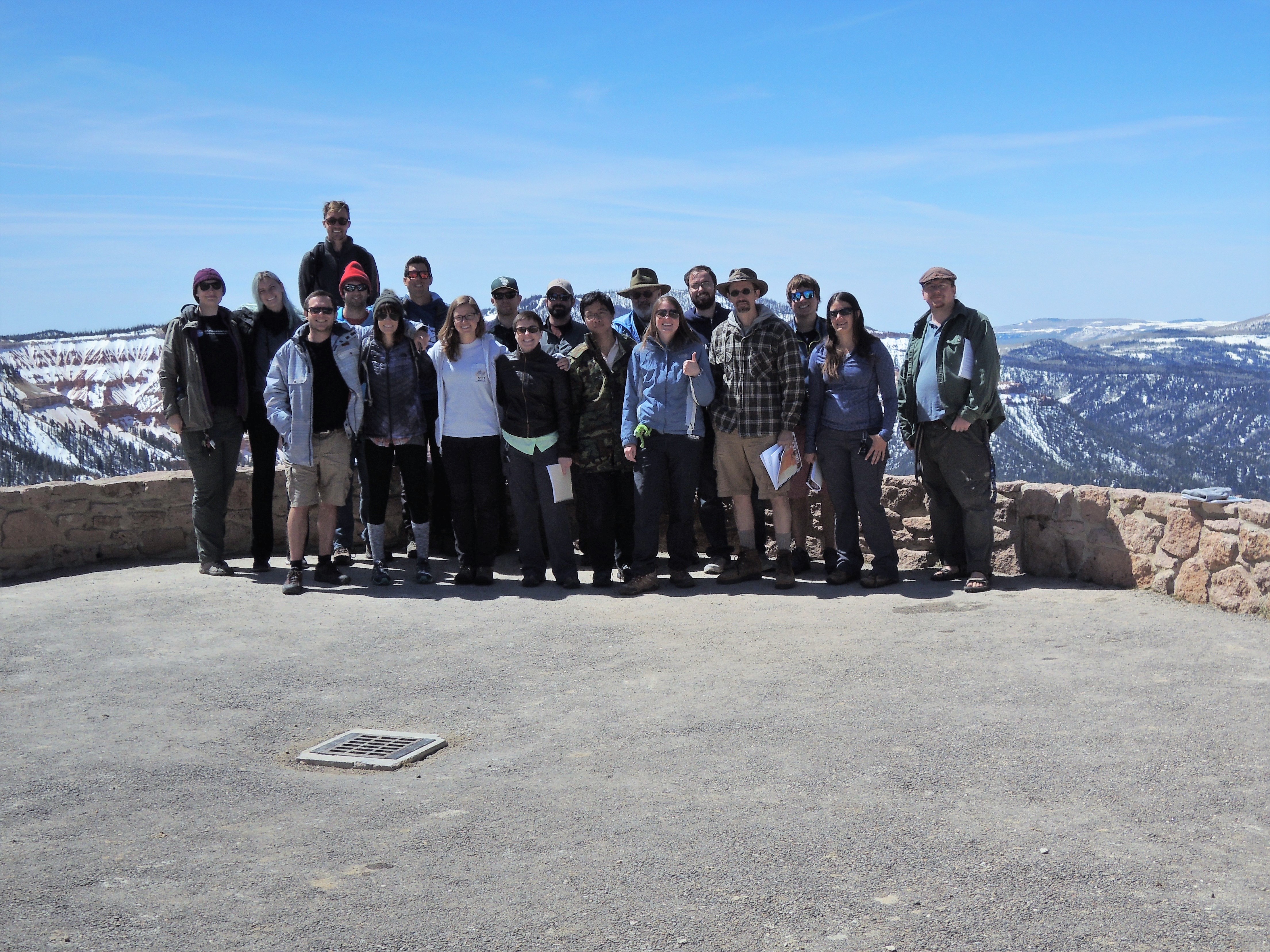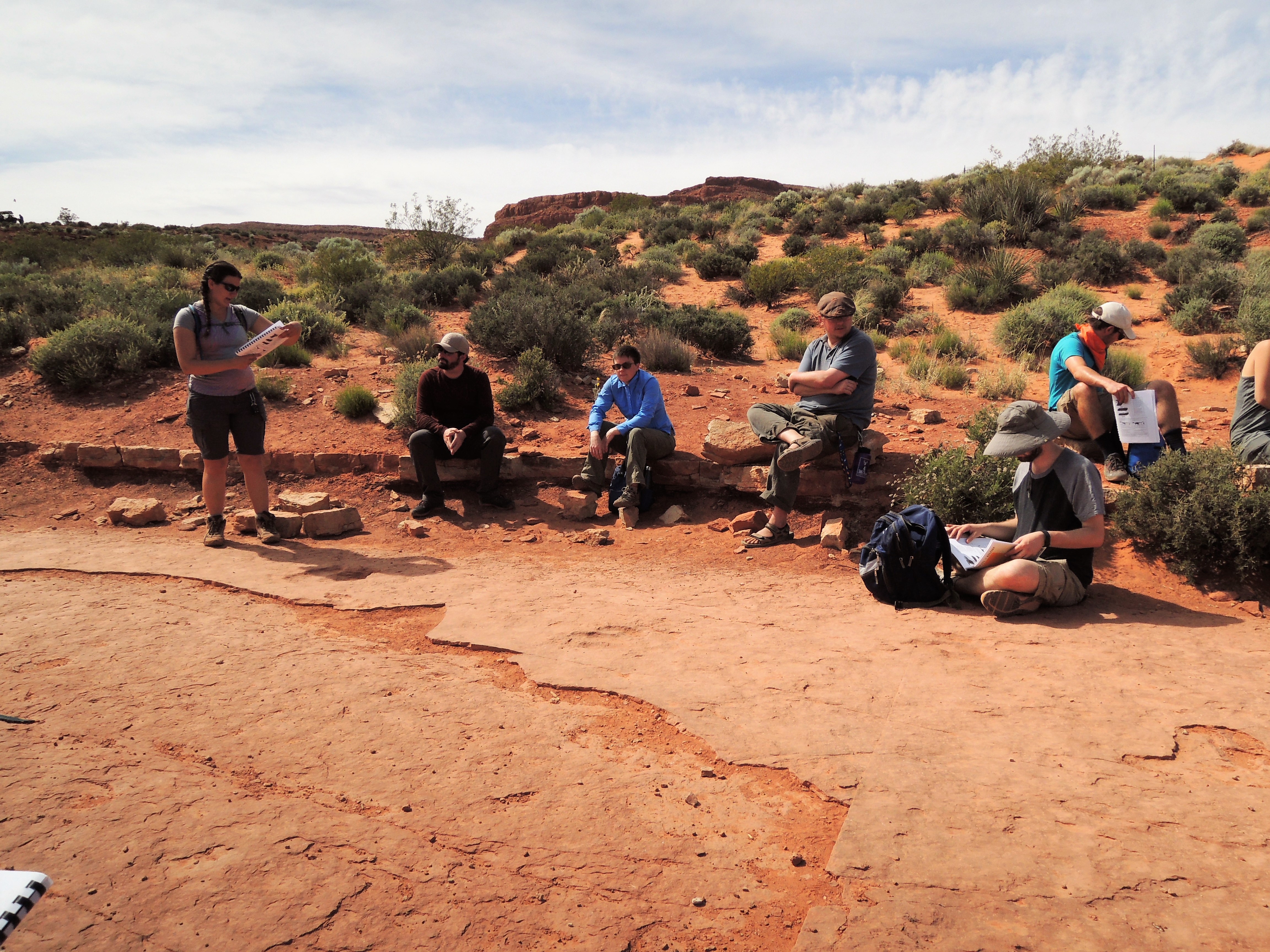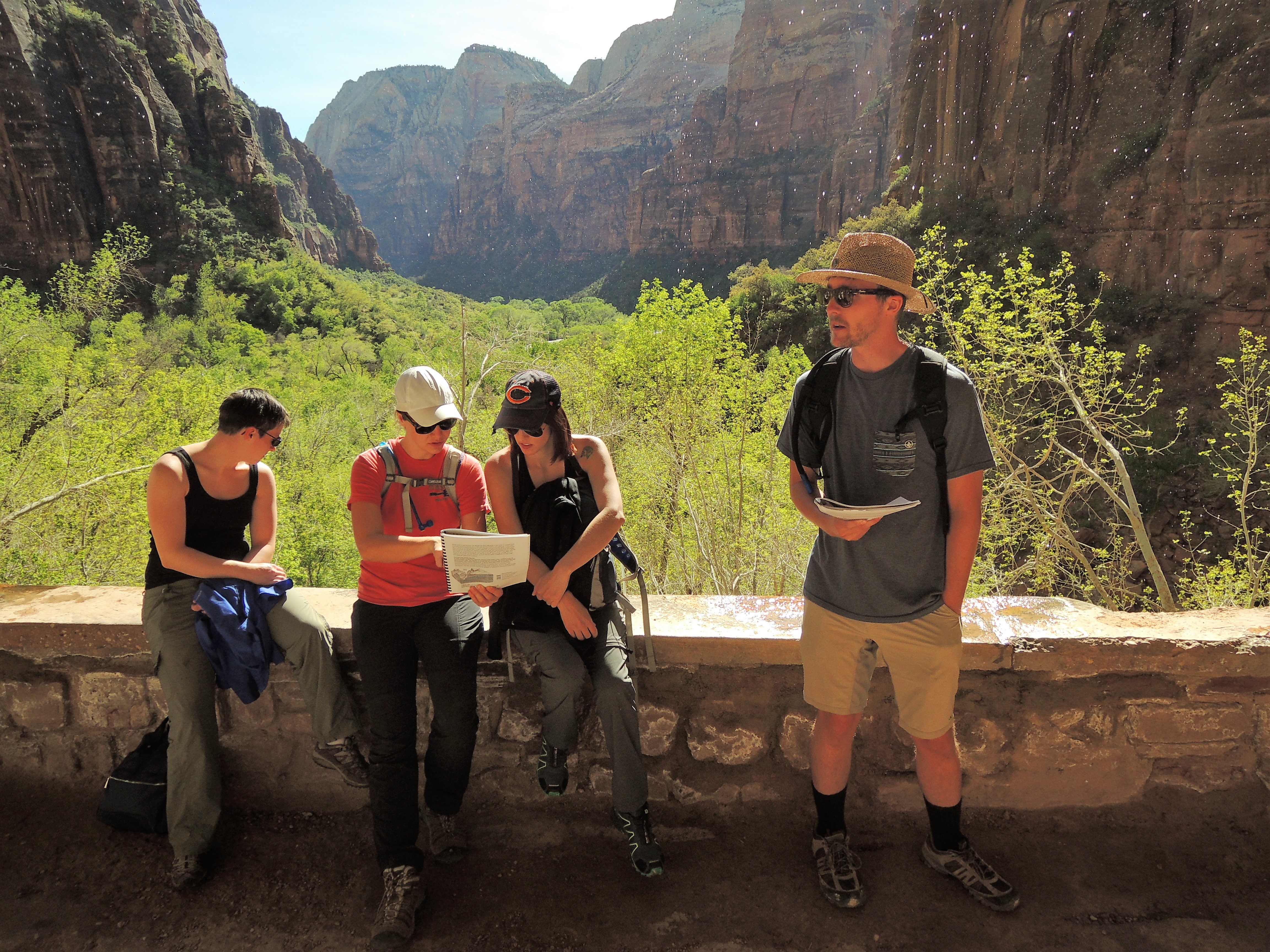LPL Fieldtrip Spring 2017
by Margaret Landis
This semester’s fieldtrip, led by Joe Spitale, was to southwestern Utah, with major stops at Zion and Bryce Canyon National Parks, to explore the geology of the Colorado Plateau, especially the series of sedimentary layers that form the Grand Staircase. The faulting, stratigraphy, and uplift all contribute to the area's unique geological features.
While making the drive up to Utah, the group stopped at Walnut Canyon and the East Kaibab monocline to discuss the National Parks system/federal land management policy and the formation of monoclines, synclines, and anticlines. Once in Utah, we spent some time in Zion National Park, discussing the overall geology (including landslide deposits near the Springdale entrance to the park), cross bedding (spectacular examples were on the road through the park), and erosional/fluvial processes. One spectacular example was Weeping Rock, where groundwater has started to carve part of an amphitheater-shaped feature while it also cascaded over the side of the formation.
The stratigraphy and erosion observed in Zion was also showcased at Bryce Canyon National Park, where the limestone and other sedimentary rocks of the park had been modified by frost heave processes into hoodoos. After discussing the overall geology, formation of faults and joints, and hoodoos, we hiked down into the formation on the Navajo Loop trail. The sedimentary layers in these parks are part of the Grand Staircase formation, a classic example of a sedimentary sequence with the most recent layers exposed in Bryce Canyon, descending all the way to the Grand Canyon.
In addition to Bryce and Zion National Parks, the LPL field trippers made stops at points of interest including Mammoth Cave (a lava tube created during one of the sporadic periods of volcanism in the area) and Coral Pink Sand Dunes State Park. As formations like the Vermillion Cliffs continue to erode, the spectacularly colored sediment can concentrate in dune formations, like the Coral Pink dunes. We also stopped to see dinosaur tracks, an interesting feature of the Jurassic aged Kayenta and Moenave layers of the Grand Staircase.
|
|
|
|
 Spring 2017 field trip group at Brian Head, a vantage point where many layers of the upper Grand Staircase can be observed. Spring 2017 field trip group at Brian Head, a vantage point where many layers of the upper Grand Staircase can be observed. |


 Donna Viola gives a talk on the formation of dinosaur tracks in the Grand Staircase.
Donna Viola gives a talk on the formation of dinosaur tracks in the Grand Staircase. Kyle Pearson speaking about the formation of Weeping Rock and sapping channels. Water can be seen cascading from the formation in the background.
Kyle Pearson speaking about the formation of Weeping Rock and sapping channels. Water can be seen cascading from the formation in the background.